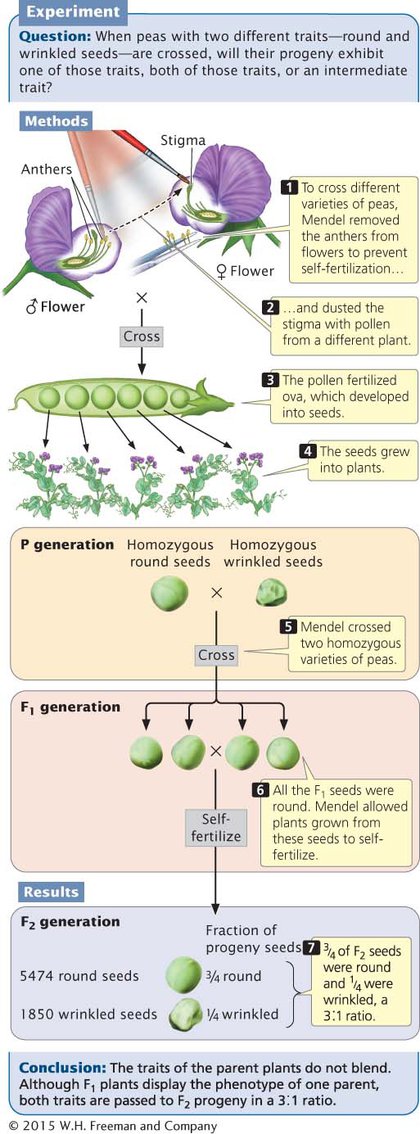3.2 Monohybrid Crosses Reveal the Principle of Segregation and the Concept of Dominance
Mendel started with 34 varieties of peas and spent 2 years selecting those varieties that he would use in his experiments. He verified that each variety was pure-

Mendel began by studying monohybrid crosses—crosses between parents that differed in a single characteristic. In one experiment, Mendel crossed a pea plant that was pure-
After crossing the two varieties in the P generation, Mendel observed the offspring that resulted from the cross. For seed shape, the phenotype develops as soon as the seed matures because the seed traits are determined by the newly formed embryo within the seed. For characteristics associated with the plant itself, such as stem length, the phenotype doesn’t develop until the plant grows from the seed; for these characteristics, Mendel had to wait until the following spring, plant the seeds, and then observe the phenotypes of the plants that germinated.
The offspring of the parents in the P generation are the F1 (filial 1) generation. When Mendel examined the F1 generation of this cross, he found that they expressed only one of the phenotypes present in the parental generation: all the F1 seeds were round. Mendel carried out 60 such crosses and always obtained this result. He also conducted reciprocal crosses: in one cross, pollen (the male gamete) was taken from a plant with round seeds and, in its reciprocal cross, pollen was taken from a plant with wrinkled seeds. Reciprocal crosses gave the same result: all the F1 seeds were round.
Mendel wasn’t content with examining only the seeds arising from these monohybrid crosses, however. The following spring, he planted the F1 seeds, cultivated the plants that germinated from them, and allowed those plants to self-